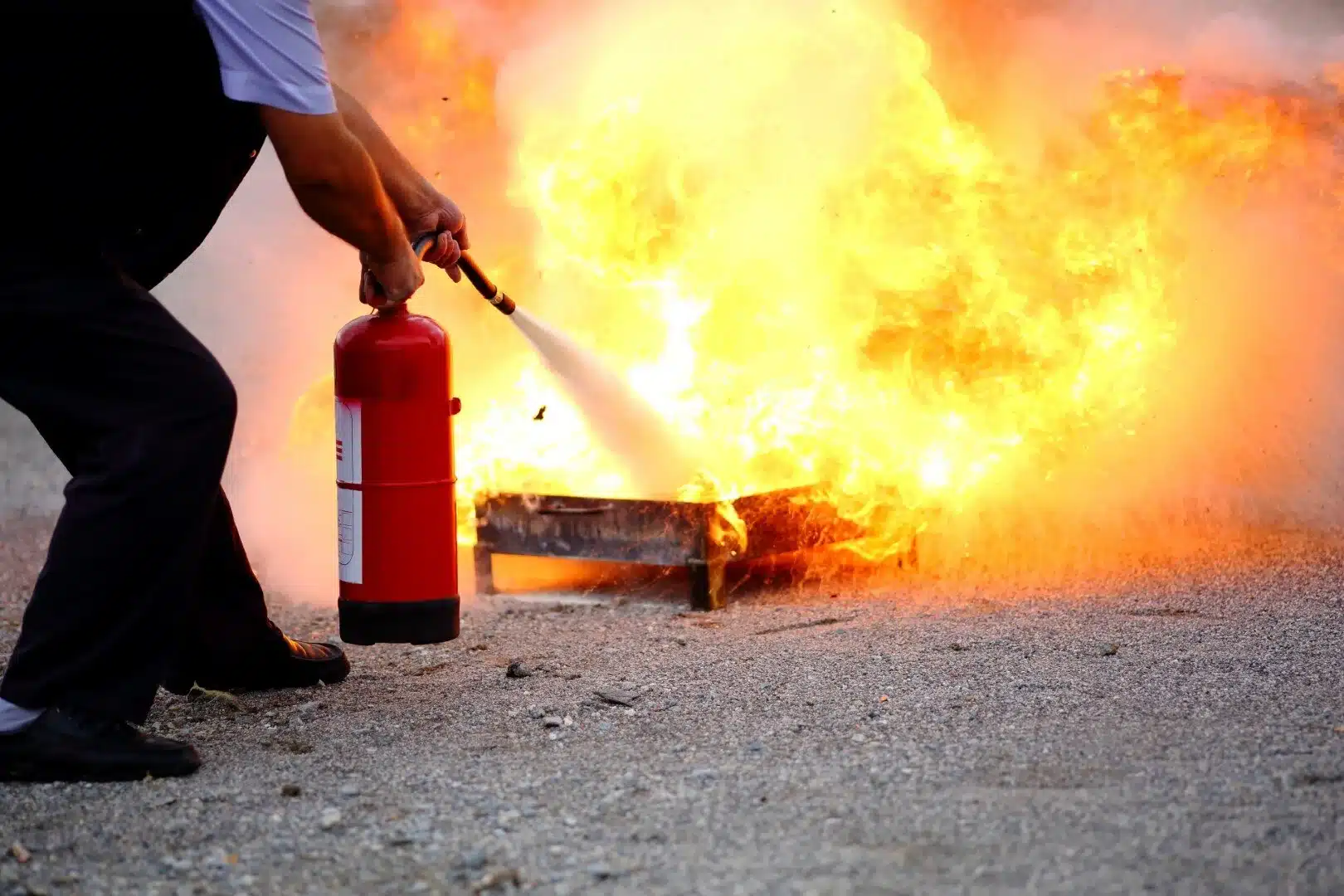Keeping your property safe and legally compliant isn’t a one-time task—it’s an ongoing responsibility that requires regular attention and expert oversight. If you’re a landlord, property manager, or business owner in London, understanding how often you should review a fire risk assessment is crucial for protecting your tenants, employees, and your business from both safety risks and legal penalties.
Fire safety legislation in the UK doesn’t stand still, and neither should your approach to compliance. With updated guidance for 2025 and increasing scrutiny from local authorities, particularly in high-density areas like London, knowing when and why to review your fire risk assessment can mean the difference between seamless compliance and costly enforcement action.
In this comprehensive guide, we’ll explore the legal requirements for fire risk assessment reviews in 2025, explain what triggers a mandatory review, outline the consequences of falling behind, and show you how professional fire risk assessment services can protect both your property and your peace of mind.
What Is a Fire Risk Assessment Review?
Before we discuss frequency, it’s important to understand what a fire risk assessment review actually involves.
A fire risk assessment is a systematic evaluation of your property to identify fire hazards, assess the risk to people, and implement appropriate control measures. A review is the process of revisiting this assessment to ensure it remains accurate, relevant, and effective.
During a review, a competent person examines:
- Whether the original assessment remains valid given any changes to the property, occupancy, or use
- The effectiveness of existing fire safety measures and whether they’re still appropriate
- Any new hazards or risks that have emerged since the last assessment
- Compliance with current fire safety legislation and guidance
- Whether previous recommendations have been implemented
- The adequacy of fire safety management procedures
A review isn’t necessarily a complete re-assessment from scratch. If nothing significant has changed, the review might simply confirm that existing measures remain adequate. However, if substantial changes have occurred, a full new assessment may be required.
Legal Framework: UK Fire Safety Regulations in 2025
Understanding your legal obligations is the foundation of proper fire safety management. The regulatory landscape for fire risk assessments in the UK is governed by several key pieces of legislation.
The Regulatory Reform (Fire Safety) Order 2005
The Fire Safety Order remains the primary legislation governing fire safety in England and Wales. It places a legal duty on the “responsible person”—typically the landlord, property owner, or employer—to:
- Carry out a fire risk assessment
- Implement appropriate fire safety measures based on the assessment findings
- Review the fire risk assessment regularly
- Keep the assessment up to date
Crucially, while the Order requires regular reviews, it doesn’t specify exact time intervals. Instead, it states that reviews must be conducted “regularly” and whenever there’s reason to believe the assessment is no longer valid or there has been a significant change.
The Fire Safety Act 2021
This act, which came into force in 2021 and continues to shape compliance requirements in 2025, clarified that the Fire Safety Order applies to the structure, external walls, and individual flat entrance doors in multi-occupied residential buildings. For landlords of apartment blocks and HMOs, this expanded scope means fire risk assessments must now consider these additional elements.
The Building Safety Act 2022
Introducing new responsibilities for higher-risk buildings (those over 18 metres or seven storeys), this legislation has created additional oversight mechanisms and requirements for fire safety documentation. While primarily affecting high-rise residential buildings, the Act’s emphasis on ongoing safety management has influenced best practice expectations across all property types.
HMO Management Regulations
Houses in Multiple Occupation face additional fire safety requirements under the Management of Houses in Multiple Occupation (England) Regulations 2006. Landlords must ensure fire safety measures are maintained in good working order, which implicitly requires regular assessment reviews to verify continued effectiveness.
How Often Should You Review a Fire Risk Assessment?
The frequency of fire risk assessment reviews depends on several factors, including property type, occupancy levels, and risk profile. While legislation doesn’t mandate specific intervals, industry guidance and best practice recommendations provide clear direction.
General Recommended Intervals
For Most Commercial and Rental Properties:
Annual reviews are considered industry best practice for the majority of premises. This yearly interval ensures that assessments remain current and allows for systematic monitoring of fire safety measures.
For Low-Risk Properties:
Properties with stable conditions, low occupancy, and minimal fire hazards may extend review intervals to every 12-18 months, provided no significant changes occur. Examples might include small, owner-occupied offices or low-risk storage facilities.
For High-Risk Properties:
HMOs, care homes, buildings with vulnerable occupants, premises with complex fire safety systems, or properties with previous fire safety concerns should undergo reviews every 6-12 months or more frequently if required.
For Very High-Risk Premises:
Venues with nighttime accommodation for vulnerable persons, properties with known deficiencies, or premises subject to enforcement notices may require reviews every 3-6 months or as directed by the local fire authority.
Fire Risk Assessment Frequency for Different Property Types
HMO Fire Risk Assessment Review Schedule:
Houses in Multiple Occupation warrant particularly close attention. Given the higher occupancy density, shared facilities, and regulatory scrutiny HMOs face, annual fire risk assessment reviews should be considered mandatory minimum practice. Many professional landlords conduct reviews every six months, especially for larger HMOs or those with frequent tenant turnover.
Standard Buy-to-Let Properties:
Single-family rental properties with straightforward layouts and stable tenancies can typically follow an annual review schedule. However, reviews should always occur when changing tenants, particularly if new occupants include children, elderly persons, or individuals with mobility limitations.
Multi-Let Apartment Buildings:
Blocks of flats require annual reviews as a minimum, with more frequent reviews advisable for buildings with communal facilities, complex layouts, or mixed-use elements (such as ground-floor commercial units).
Commercial Premises:
Offices, retail units, and industrial premises generally require annual reviews, though this may increase to six-monthly intervals for premises with public access, shift work, or processes involving flammable materials.
What Triggers a Mandatory Fire Risk Assessment Review?
Beyond scheduled intervals, certain events require immediate review of your fire risk assessment, regardless of when the last review occurred.
Significant Changes to the Property:
Any alteration to the building’s layout, structure, or use triggers a review requirement. This includes:
- Building extensions or renovations
- Changes to escape routes or fire doors
- Installation or removal of fire safety equipment
- Conversion of spaces (e.g., garage to bedroom, office to living space)
- Changes to external cladding or façade systems
- Modifications to heating or electrical systems
Changes in Occupancy or Use:
Alterations to how people use your property necessitate assessment review:
- Increased occupancy numbers
- Changes in tenant demographics (e.g., accommodating vulnerable persons)
- Different operational hours (introducing night-time use)
- Change of business type in commercial premises
- Subletting or additional occupants in rental properties
After a Fire or Near-Miss Incident:
Any fire, no matter how minor, or any situation where fire safety measures were tested (such as evacuation drills revealing problems) demands an immediate assessment review to understand what happened and prevent recurrence.
Introduction of New Hazards:
New activities, equipment, or materials that introduce fire risks require assessment updates:
- Storage of flammable materials
- Installation of high-heat equipment
- Introduction of cooking facilities
- Changes to waste management arrangements
Following Enforcement Action:
If your local fire authority issues an enforcement notice, prohibition notice, or provides informal advice following an inspection, you must review and update your fire risk assessment to address identified concerns.
Changes in Legislation or Guidance:
Updates to fire safety regulations or official guidance may render existing assessments outdated. The 2021 Fire Safety Act‘s clarifications regarding building exteriors, for example, required many landlords to review and expand their existing assessments.
Staff or Tenant Turnover:
Significant changes to who occupies or manages the property can affect fire safety arrangements:
- New tenants unfamiliar with fire procedures
- Changes to responsible persons or fire wardens
- Staff turnover affecting fire safety management capability
Who Is Responsible for Reviewing Fire Risk Assessments?
Understanding responsibility is crucial for ensuring reviews actually happen.
The Responsible Person:
Under the Fire Safety Order, the “responsible person” bears ultimate legal accountability. This is typically:
- The landlord or property owner for rental properties
- The employer for workplaces
- The person with control of the premises (which may be a managing agent)
Landlord Responsibilities:
For landlords of HMOs and other rental properties, you cannot delegate responsibility, even if you hire a managing agent. You remain legally accountable for ensuring:
- Fire risk assessments are conducted and kept current
- Reviews occur at appropriate intervals
- Identified actions are implemented
- Records are maintained and available for inspection
Managing Agents:
While managing agents may conduct day-to-day fire safety management, ultimate legal responsibility remains with the landlord. Clear contractual arrangements should specify who conducts reviews and how findings are communicated.
Competent Persons:
Legislation requires that fire risk assessments be conducted by a “competent person”—someone with sufficient training, experience, knowledge, and other qualities to properly undertake the task. For complex properties or where landlords lack expertise, this typically means engaging professional fire risk assessors.
Consequences of Not Reviewing Fire Risk Assessments
Failing to maintain current fire risk assessments carries serious implications across legal, financial, and moral dimensions.
Legal Penalties and Enforcement Action:
The Fire Safety Order is enforced by local fire and rescue authorities, who have extensive powers:
- Unlimited fines for serious breaches in Crown Court cases
- Fines up to £5,000 in Magistrates’ Court proceedings
- Imprisonment up to two years for particularly serious violations
- Prohibition notices preventing use of all or part of your property until deficiencies are rectified
- Enforcement notices requiring specific actions within set timeframes
In London, where housing standards face intense scrutiny, fire authorities are particularly active in inspecting rental properties and taking action against non-compliance.
Insurance Implications:
Insurers may refuse claims following fire incidents if investigations reveal outdated or inadequate fire risk assessments. Even if claims are paid, premiums may increase substantially or coverage may be withdrawn entirely.
Licensing Consequences for HMO Landlords:
For properties requiring HMO licensing, fire safety compliance is a fundamental licensing requirement. Inadequate fire risk assessments can result in:
- Refusal of new license applications
- Revocation of existing licenses
- Interim or final management orders where the council takes control of your property
- Rent repayment orders requiring refund of up to 12 months’ rent to tenants
Civil Liability:
If outdated fire safety measures contribute to injury or death in a fire, landlords face potential civil claims for damages. The failure to conduct regular reviews could be cited as evidence of negligence.
Tenant Safety Risks:
Beyond legal and financial consequences, outdated assessments mean real people face real dangers. Fire safety measures that aren’t regularly reviewed may fail precisely when they’re needed most, with potentially tragic results.
Reputational Damage:
In an era of online reviews and social media, fire safety failings quickly become public knowledge. Prosecution, enforcement action, or tenant complaints about safety concerns can severely damage your reputation, making future lettings more difficult.
Benefits of Professional Fire Risk Assessment Review Services
While some landlords attempt to conduct their own fire risk assessment reviews, professional services offer substantial advantages.
Expertise and Qualification:
Professional fire risk assessors bring specialist knowledge of:
- Current legislation and how it applies to different property types
- Industry best practice and guidance documents
- Common hazards and effective control measures
- Technical fire safety systems and their maintenance requirements
Certified assessors stay current with regulatory changes, ensuring your assessment reflects the latest requirements—something difficult for landlords managing fire safety alongside numerous other responsibilities.
Objectivity and Independence:
External professionals provide impartial evaluation without the “familiarity bias” that can cause property owners to overlook hazards they encounter daily. Fresh eyes often identify issues that occupants have stopped noticing.
Comprehensive Documentation:
Professional fire risk assessment reviews produce detailed, properly structured reports that:
- Meet regulatory expectations for content and format
- Clearly identify hazards, risks, and required actions
- Prioritise recommendations by urgency and importance
- Provide evidence of compliance for licensing authorities and insurers
- Stand up to scrutiny in enforcement or legal proceedings
Time and Resource Efficiency:
Conducting thorough fire risk assessment reviews requires significant time and knowledge. Professionals complete assessments efficiently, freeing landlords to focus on core business activities while ensuring compliance obligations are met.
Insurance Recognition:
Many insurers look favourably upon professionally conducted fire risk assessments, potentially resulting in premium reductions. Some policies explicitly require professional assessments for certain property types.
Reduced Liability:
Demonstrating that you’ve engaged qualified professionals to assess fire risks provides evidence of meeting your duty of care. While it doesn’t eliminate liability, it significantly strengthens your position by showing you’ve taken reasonable steps to ensure safety.
Ongoing Support and Guidance:
Professional fire safety companies don’t just deliver a report and disappear. They provide ongoing advice, answer questions about implementation, and can return for follow-up visits to verify that recommendations have been properly actioned.
How Professional Fire Risk Assessment Services Support London Landlords
For landlords operating in London and across the M25, professional fire risk assessment review services are particularly valuable given the capital’s unique challenges.
Understanding London’s Property Landscape:
London’s housing stock ranges from Georgian townhouses to modern high-rises, each presenting distinct fire safety considerations. Professional assessors familiar with London properties understand these variations and apply appropriate standards.
Navigating Multiple London Boroughs:
Different London boroughs may interpret and enforce fire safety regulations with varying degrees of strictness. Local knowledge helps ensure your assessments meet the expectations of specific local fire authorities.
HMO Expertise:
London has one of the highest concentrations of HMO properties in the UK. Specialist fire risk assessors understand the particular requirements these properties face, from additional licensing schemes to enhanced fire safety standards.
Fast Response Times:
London-based fire safety companies can respond quickly when you need assessments conducted between tenancies, following incidents, or to address enforcement notices with tight deadlines.
Comprehensive Service Coverage:
Professional fire safety services don’t stop at assessments. They can also assist with:
- Fire alarm installation and maintenance
- Emergency lighting systems
- Fire door installation and certification
- Fire safety training for landlords and tenants
- Implementation of assessment recommendations
Compliance Peace of Mind:
Perhaps most importantly, engaging professional fire risk assessment services provides confidence that you’re meeting your legal obligations. For time-pressed landlords managing multiple properties, this assurance is invaluable.
Making Fire Risk Assessment Reviews Work for Your Property Portfolio
If you manage multiple properties across London, establishing a systematic approach to fire risk assessment reviews protects you from compliance gaps.
Create a Review Schedule:
Maintain a calendar showing when each property’s fire risk assessment is due for review. Set reminders at least two months in advance to allow time for scheduling and any necessary remedial work before reviews expire.
Keep Comprehensive Records:
Maintain files for each property containing:
- Current fire risk assessment and all previous versions
- Evidence that recommended actions have been completed
- Fire safety maintenance records (alarm tests, emergency lighting checks, fire door inspections)
- Staff or tenant fire safety training records
- Correspondence with fire authorities
Implement a Trigger System:
Ensure all property managers, maintenance teams, and relevant staff understand what changes require fire risk assessment reviews. Create simple checklists to consult before authorising alterations or changes in use.
Budget for Fire Safety:
Include fire risk assessment reviews and implementation of recommendations in your annual budget for each property. Fire safety isn’t an optional expense—it’s a fundamental cost of responsible property management.
Act on Recommendations Promptly:
Fire risk assessments only protect you if recommendations are actually implemented. Prioritise high-priority actions and maintain records demonstrating completion of all identified measures.
Conclusion: Prioritise Regular Fire Risk Assessment Reviews in 2025
Fire safety compliance isn’t getting any easier or less important. As we move through 2025, landlords and property managers in London face enhanced scrutiny, evolving regulations, and increasing expectations from tenants, regulators, and insurers.
The question “how often should you review a fire risk assessment?” has a clear answer: regularly enough to ensure your assessment remains accurate and your property stays compliant. For most landlords, that means annual reviews as a minimum, with more frequent intervals for HMOs and higher-risk properties, plus immediate reviews whenever significant changes occur.
Professional fire risk assessment review services provide expertise, documentation, and peace of mind that DIY approaches simply cannot match. The cost of professional assessments is modest compared to the potential fines, legal liability, and human tragedy that inadequate fire safety can cause.
Book Your Professional Fire Risk Assessment Review Today
Don’t leave your fire safety compliance to chance. Whether you’re due for an annual review, facing property changes that require assessment updates, or simply want to ensure your existing assessment meets current 2025 standards, professional help is available.
Contact us today for:
- Comprehensive fire risk assessment reviews for all London property types
- HMO-specialist fire safety services
- Fast turnaround times to meet urgent compliance needs
- Detailed, professional reports accepted by licensing authorities
- Ongoing support to implement recommendations
- Competitive pricing with no hidden costs
Call +441135198635 or email info@landlordcertification.co.uk for your free, no-obligation quote.
Serving landlords, property managers, and business owners across London and the M25. Let us help you maintain compliance, protect your tenants, and manage your properties with confidence.






